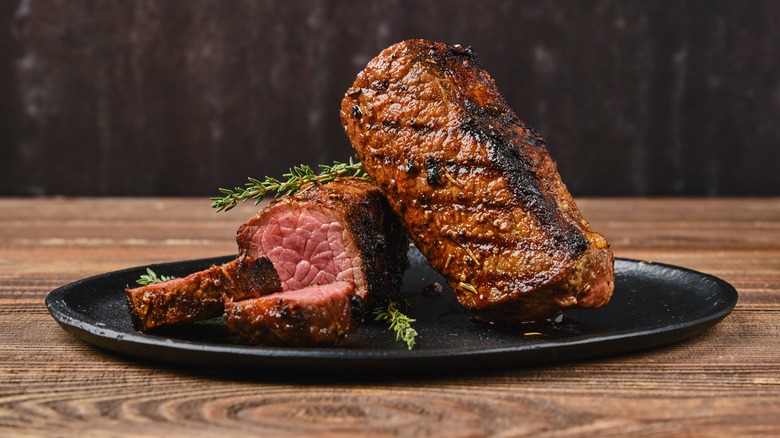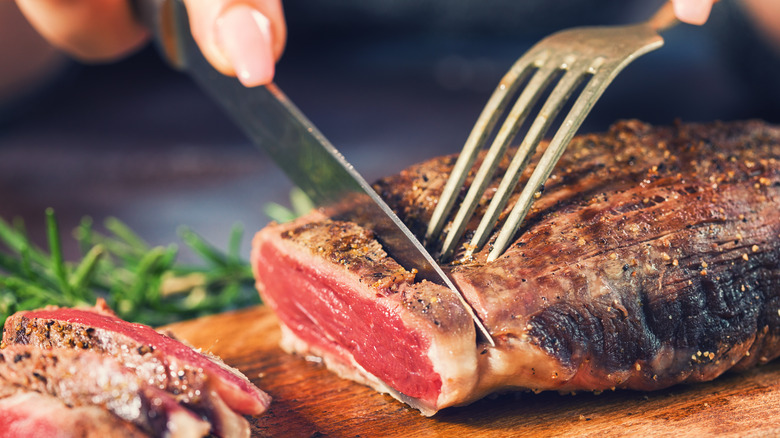Etiquette Matters When Cutting Steak With A Fork And Knife
In fancy restaurants, table manners matter, and steakhouses are no exception. Just like proper chopstick etiquette in a Korean restaurant, there are specific rules about how to position your hands as you cut a steak.
In the modern era, it's less about left versus right and more about dominant versus non-dominant hand. Per proper American table etiquette, the majority of the meal is eaten with a fork held in the dominant hand. The only time the fork is moved to the non-dominant hand is when you pick up the knife to cut. Rather than cutting your entire steak into bite-sized pieces at once, you should cut off each individual bite as you take it. Be sure to saw against the grain, too. Watching someone orally wrestle a particularly tough bite isn't super appetizing for your dining companions, and cutting in the opposite direction of the muscle fibers makes for bites that are easier to chew.
To cut a steak, the knife is moved in a back-and-forth motion (known as the American zig-zag) using small, controlled movements with the elbows close to the body. In this position, your non-dominant hand should be holding the fork with the tines facing down, and with your index finger extended along the back of the utensil to press the fork into the steak, providing leverage as you cut. (Side note: Even if the conversation is lively and engaging, always avoid gesticulating with your steak knife.)
Spatial awareness for the win
Now, you've successfully freed a bite from your steak. Good for you! So, how do you eat it? Per proper etiquette, you'll need to set the knife down before taking your bite. The knife should be placed across the rim of the plate with the blade facing inward, typically in the upper 12 to 3 o'clock quadrant of the plate's edge. Avoid placing a food-residue-covered knife on the table, and don't set it down on your napkin, which belongs draped across your lap.
Then, transfer the fork back to your dominant hand, and raise the bite to your mouth with the tines of the fork pointing upward and somewhat parallel to the plate. Take care not to grip the fork too hard. It should be held like a pencil, with the handle extending between your index and middle finger and anchored with your thumb. At the end of your meal, you can use your utensils to signal to your server that you're finished and they can take the plate away. To do this, set your knife and fork (tines down) on the edge of the plate with the handles at 4 o'clock.
Good knife skills set the tone for a formal meal and showcase your sophistication. Plus, familiarizing yourself with steakhouse table manners can make you feel more confident, so you don't have to think about it and can enjoy yourself more comfortably. (And by the way, you may not want to order your steak "well done," either.)

